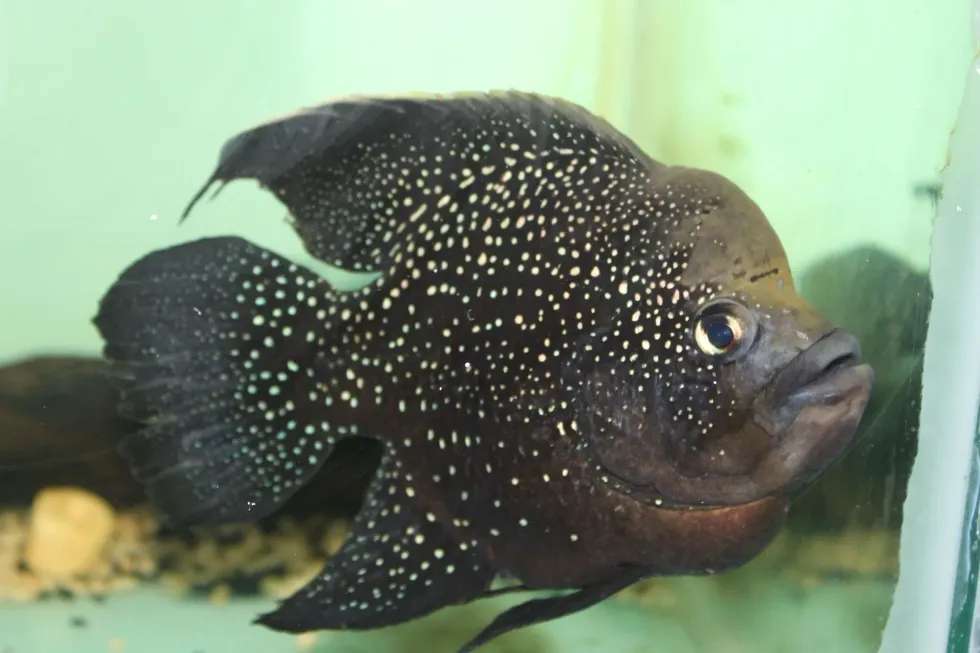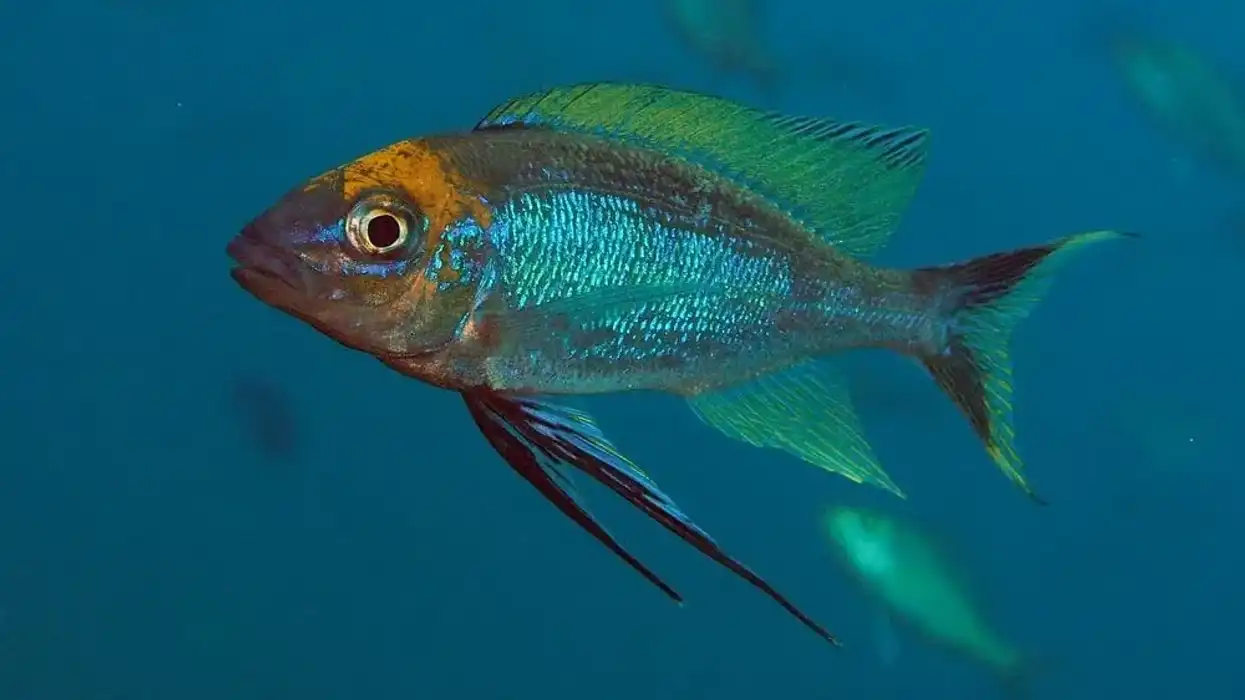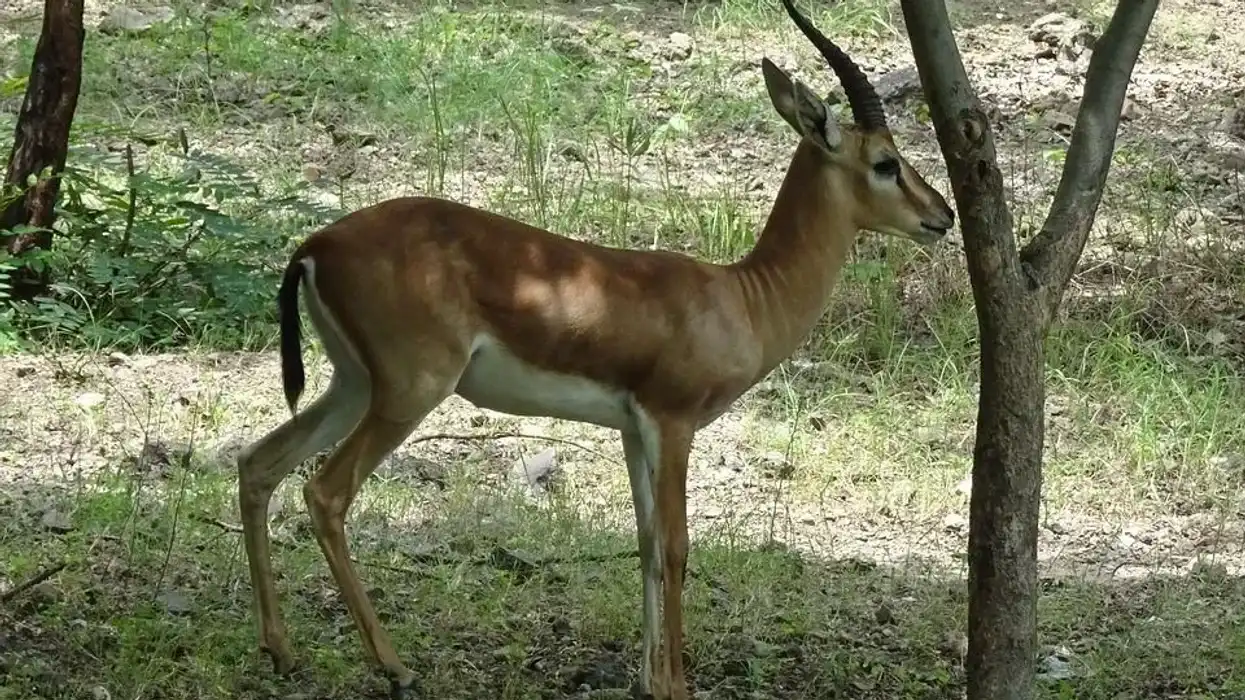The black diamond cichlid (Paratilapia polleni) is a magnificent cichlid endemic to Madagascar, where it survives in a broad range of altitude, temperature, and pH, even in some somewhat brackish regions! It matures to a complete black coloring with nearly dazzling white dots throughout its entire body as it grows to a very large size.
Males often acquire a distinctive nuchal hump. Many aquarists see this species as a prize cichlid.
Polleni cichlid is aggressive fish that consumes its tankmates and plants if they fit in its mouths. This species (Polleni cichlid) can tolerate temperatures ranging from 62-82.4 F (16.6-28 C). Because these fish can adapt to most types of water, it's better not to try to modify the pH 6.5-8 or hardness.
Males often develop a distinctive nuchal hump. Earlier paratilapia bleekeri was considered the same species.
For more great content, check out these Atlantic wreckfish facts and Atlantic moonfish facts.
Black Diamond Cichlid Interesting Facts
What type of animal is a black diamond cichlid?
Black diamond cichlid (Paratilapia polleni cichlid) is a fish in the order Cichliformes that belong to the family Cichlidae. This is a vast and varied family. It is a food fish. Black diamond cichlid for sale is available.
What class of animal does a black diamond cichlid belong to?
Black diamond cichlid (Paratilapia polleni) belongs to the class Actinopterygii and is a food fish and eats plants and fish.
How many black diamond cichlid are there in the world?
Paratilapia is the most common cichlid genus in Madagascar, and it was formerly distributed all across the island. Polleni cichlid is now less frequent, although they may still be found in the northwest and northeast, as well as along the entire east coast.
There are additional relic populations in the Central Massif and the south-east. It is still prevalent in several lakes in Sambirano. The riverine population, on the other hand, is extremely small.
Where does a black diamond cichlid live?
Black diamond cichlid (Paratilapia polleni) is very adaptable in the wild. It may live at heights of up to 4921.2 ft (1500 m), with water temperatures as high as 53.6 F (12 C), and in hot springs as hot as 104 F (40 C).
It lives in a variety of rivers and streams in northern Madagascar, notably the area around the town of Andapa, where the majority of individuals shipped for the tank trade in recent years have been captured.
What is a black diamond cichlid's habitat?
The black diamond cichlid habitat progenitors existed solely on Madagascar, a huge island off the east coast of Africa. However, these fish is now live in aquariums all over the world.
Who do black diamond cichlid live with?
Black diamond cichlid (Paratilapia polleni) is frequently compatible (live) with a wide range of other African river and rift lake cichlids of equal size, especially in a bigger tank where it has been reared with its tankmates since infancy. It should not be made to live in the same enclosure as decorative invertebrates.
How long does a black diamond cichlid live?
Black diamond cichlid (Paratilapia polleni) has a long lifespan. Maintain great water conditions and give them premium meals, and they will most likely live for many years, maybe reproducing to generate the next generation of live fish for your tank.
How do they reproduce?
A large breeding ritual will begin several days before spawning, with the male fish assuming extreme black coloration and exhibiting to the female. Polleni cichlid will then excavate a huge depression in the substrate in preparation for spawning.
The female fish will lay her eggs in either the big pit or a hole in the décor. Each egg has a long sticky filament connected to it, which attaches to other eggs to form large strings of hundreds of eggs.
The female may lay up to 1000 eggs, which she cares for while the male protects the perimeter.
The threads may fold over themselves and form a bigger mass when the female fanned the eggs. The eggs should hatch in 48 hours, and the wrigglers should be able to swim freely after four to five days.
What is their conservation status?
Throughout their range, mainland populations of black diamond cichlid (Paratilapia polleni) are Endangered by widespread deforestation and habitat degradation or destruction. Water diversion for large-scale irrigation projects is a significant danger to this species' populations in the Mananjeba and Mahavavy du Nord basins.
Black Diamond Cichlid Fun Facts
What do black diamond cichlid look like?
Its shape and size details, like that of other cichlids, are similar in description to that of a perch, thus the scientific name Perciformes, meaning 'perch-like.' Captive males acquire a nuchal hump, a layer of fat over the eyes.
Adults and subadults are in charge. P. polleni are jet dark in coloration, with stunning iridescent spots that change from golden to blue depending on the angle of the light and the movement of the fish; the eye is in a bright yellow coloration.
Males have larger and sharper pelvic fins, a more rounded head form, and the margins of the dorsal and anal fins are generally straighter in males than females.
Females are regarded to be more attractive in their coloration patterns among aquarists, although being smaller. Captive males develop a nuchal hump, a layer of fat over the eyes.

How cute are they?
The black diamond cichlid fish grows to be one of the world's most adaptable cichlids, with magnificent jet dark and brilliant white colors! They are hardy, unique, and are guaranteed to win over any keeper's heart just like peacock cichlids and rainbow cichlids. Although, it is more popular as a food fish.
How do they communicate?
Adult cichlids convey their behavioral states by altering their color patterns through innervation and hormones.
How big is a black diamond cichlid?
Males are supposed to grow to be approximately 12 in (30.48 cm) long in size in aquariums, although we haven't seen one greater than about 11 in (28 cm) large in size, including their tails, which is extremely huge for most tanks. Females are smaller than males. The maximum size is 9.8-11.8 in (24.8-30 cm).
How fast can a black diamond cichlid swim?
Their speed is not known.
How much does a black diamond cichlid weigh?
They're modest-sized 0.22 lb (100 g) fishes when fully mature. One Pollini will ultimately require a big tank, some plants decor, 62-82.4 F (16.6-28 C) temperature, and ph 6.5-8.0.
What are the male and female names of the species?
When they're young, it's tough to distinguish between males and females, but when they're older, it's simple since males transform from gray to extremely black with bright specks. No sex-specific name is allotted.
What would you call a baby black diamond cichlid?
You can call them fry. The fry quickly grows into miniature replicas of their mother and are quite adorable.
What do they eat?
It is an omnivorous fish and an opportunistic piscivore, attacking smaller categories of fish with stealth, its dark coloring providing them an edge. It is observed hunting in a tank environment and feed the smaller fish into its mouth.
It is a food fish in Madagascar, and it is said to have a nice flavor, like many cichlid fishes in various places. It also feeds on plants.
Feeding food to them is straightforward.
Dry, frozen, flakes, pellets, and live meaty foods of high-quality categories will be readily accepted.
It, like other cichlids fish and most other predatory freshwater fish, should never be given beefheart or any other mammal flesh or fowl, since these foods are not part of its natural diet and will lead to a variety of severe health impacts, including obesity and fatty liver disease.
The essentials to a diet that will guarantee that this fish maintains maximum health and coloring are quality and diversity, therefore this species should not be given dry items solely.
Are they dangerous?
The cichlid (black diamond) is an aggressive freshwater fish that feed on its tankmates if they fit in its mouths.
Would they make a good pet?
The black diamond polleni cichlid care is easy. It is a well-known hardy and adaptable tank fish. Males have a significantly distinct pattern.
On big adult males, there may be two variations: one with huge white spots and the other with little spangles. It will eventually require a tank with at least 80 gal (302.8 L) of water to survive in.
It's probably better to keep it alone or is with a compatible few Synodontis catfish. Pollini black diamond cichlid tank is large with ample decor 62-82.4 F (16.6-28 C) water temperature, and ph 6.5-8.0. They need dried, frozen, pellets fish foods.
Did you know...
Bolivian rams are one of Africa's least violent cichlids fish. They are a diminutive species, reaching just around three and a half inches when mature, and may thus be housed in a fairly sized tank alongside either their own species or other African cichlids. These fish are yellow and white in color and have an appealing shape.
How did black diamond cichlids get their name?
Because of its color, locals refer to it as black fish.
What are the characteristics of a black diamond cichlid?
As an adult, this tropical fish has a beautiful solid black and brilliant white coloring. They can be used as the "centerpiece" fish in aquariums. Breeding is possible in the tank, and it may coexist with many different species in a large tank. They're very tough but flexible, with a lot of personalities.
Here at Kidadl, we have carefully created lots of interesting family-friendly animal facts for everyone to discover! For more relatable content, check out these Texas cichlid facts and redbreast sunfish facts for kids.
You can even occupy yourself at home by coloring in one of our free printable cichlid coloring pages.
Second image by Hectonichus.










